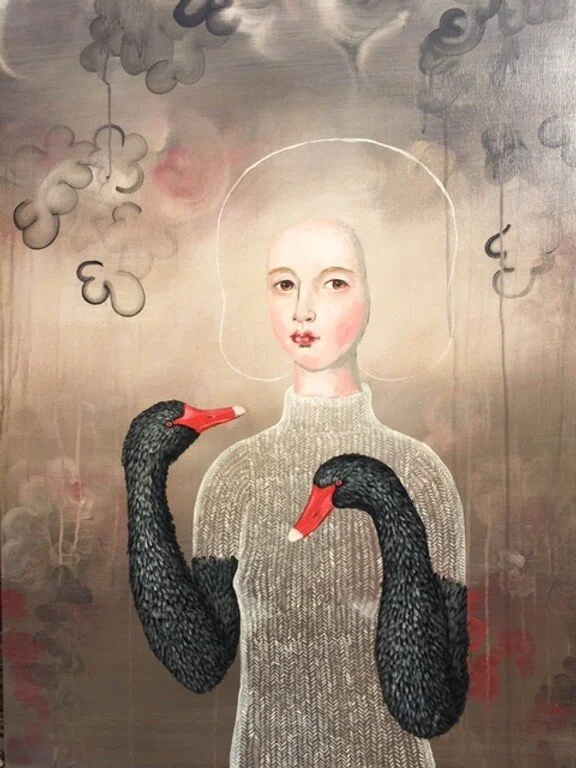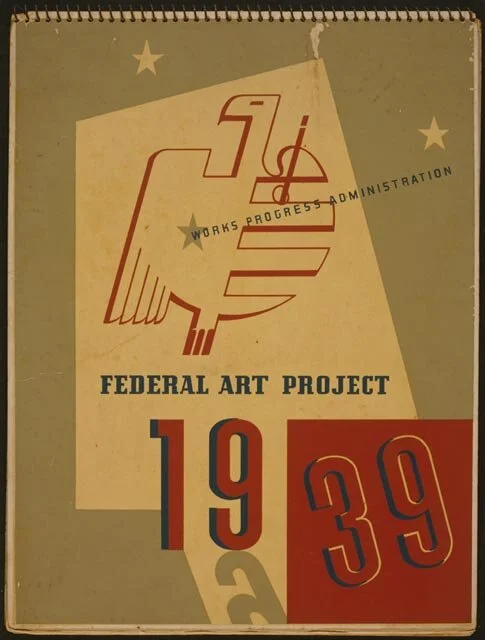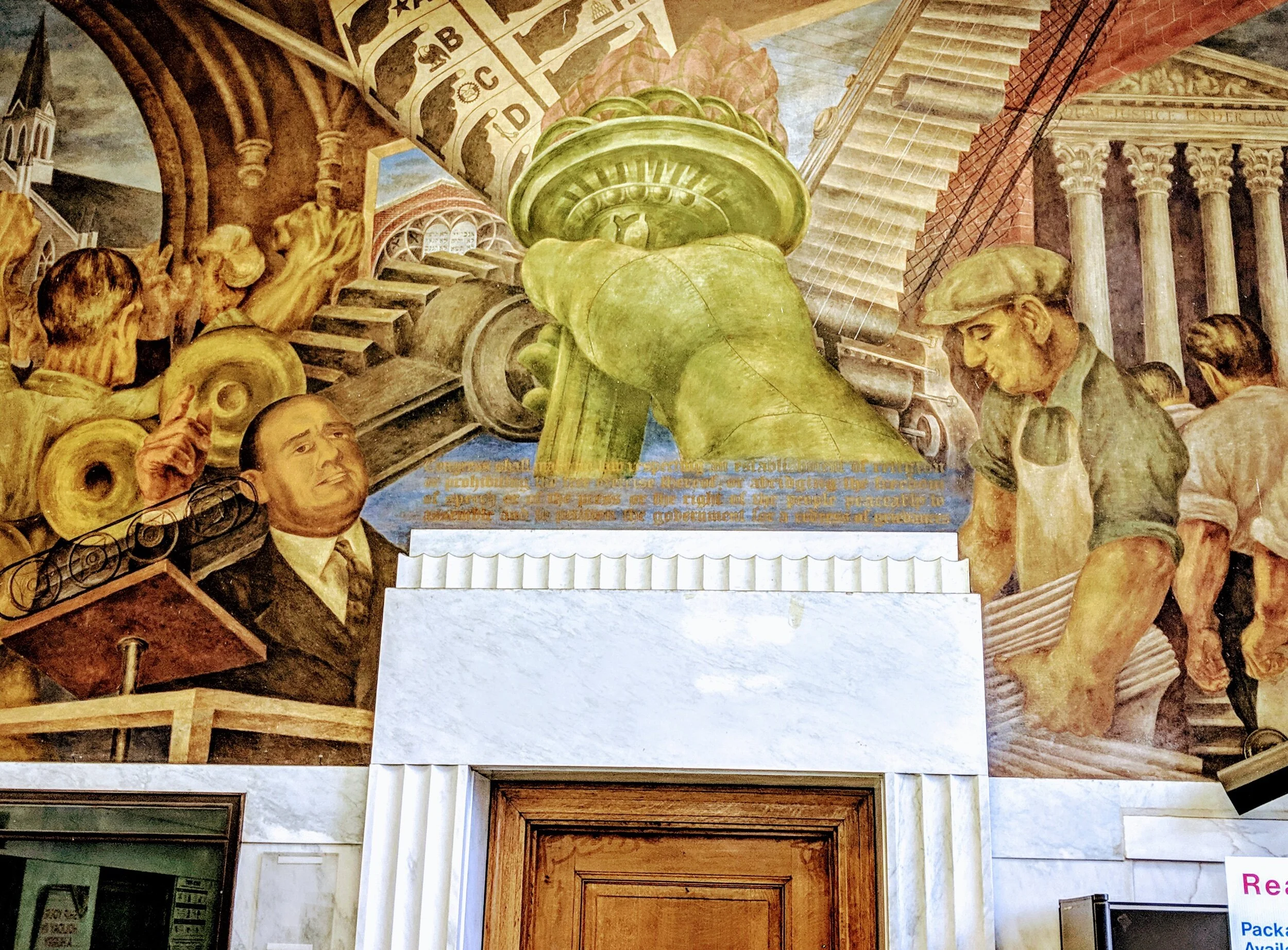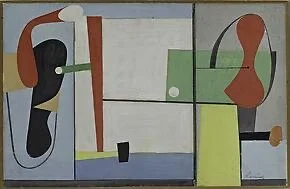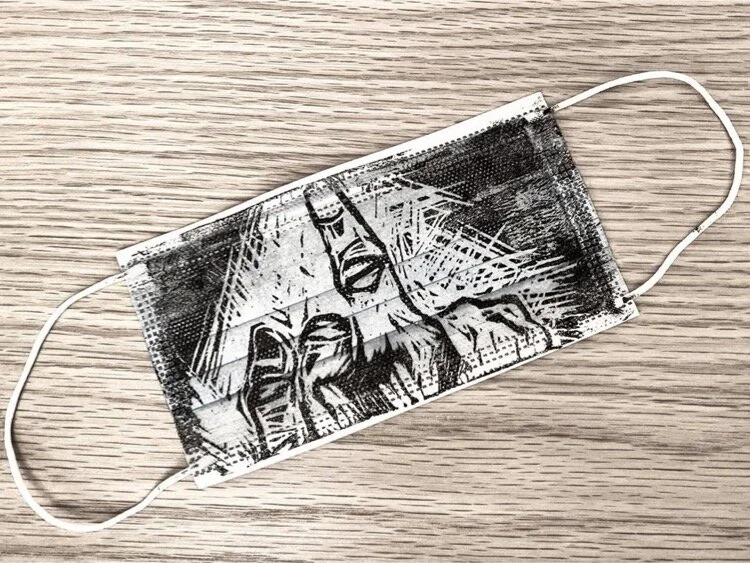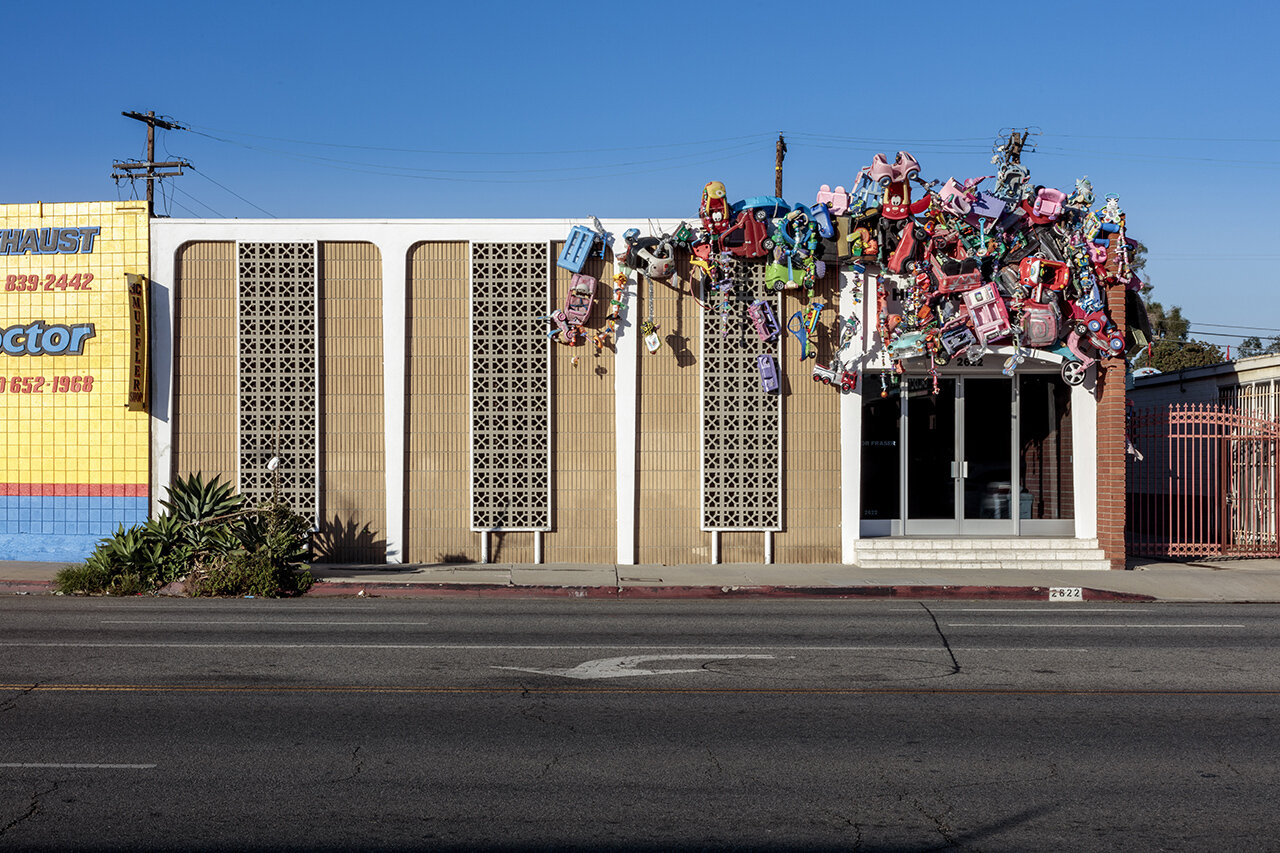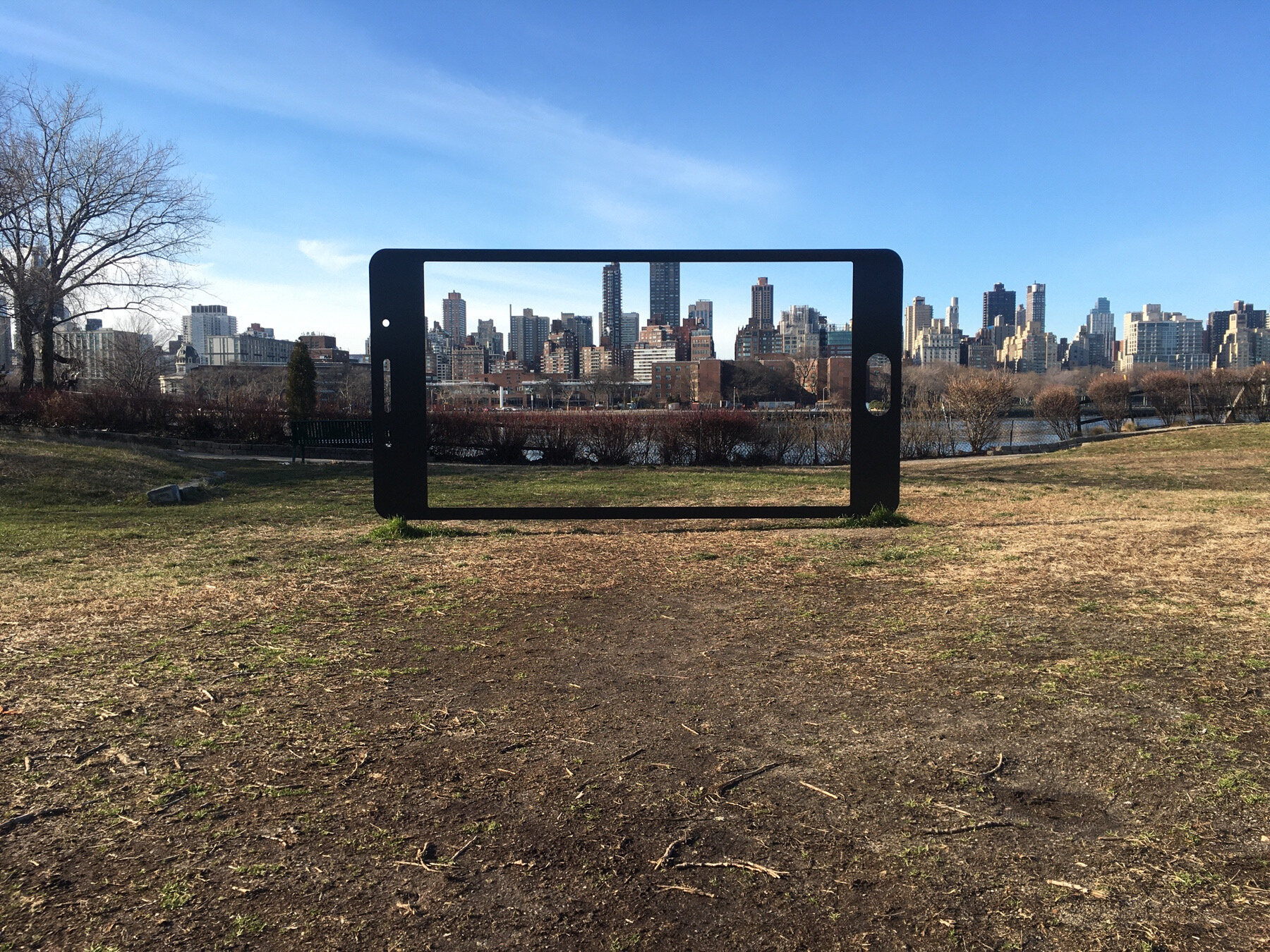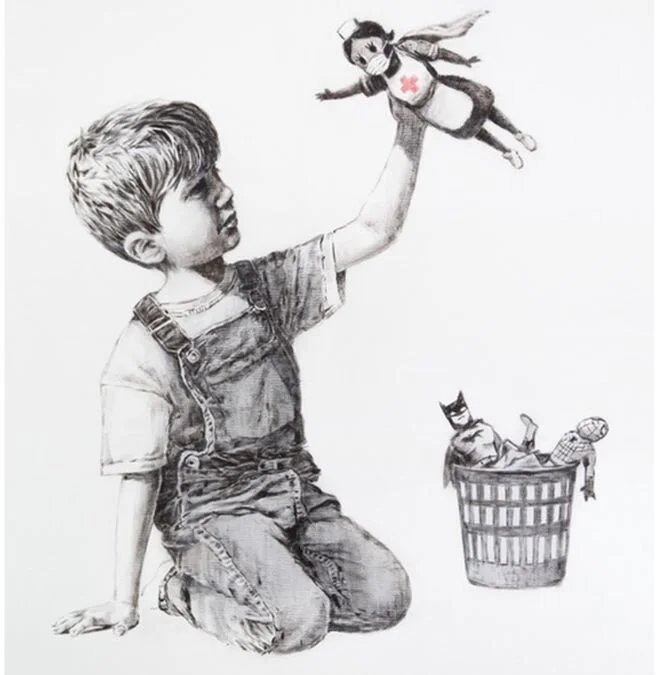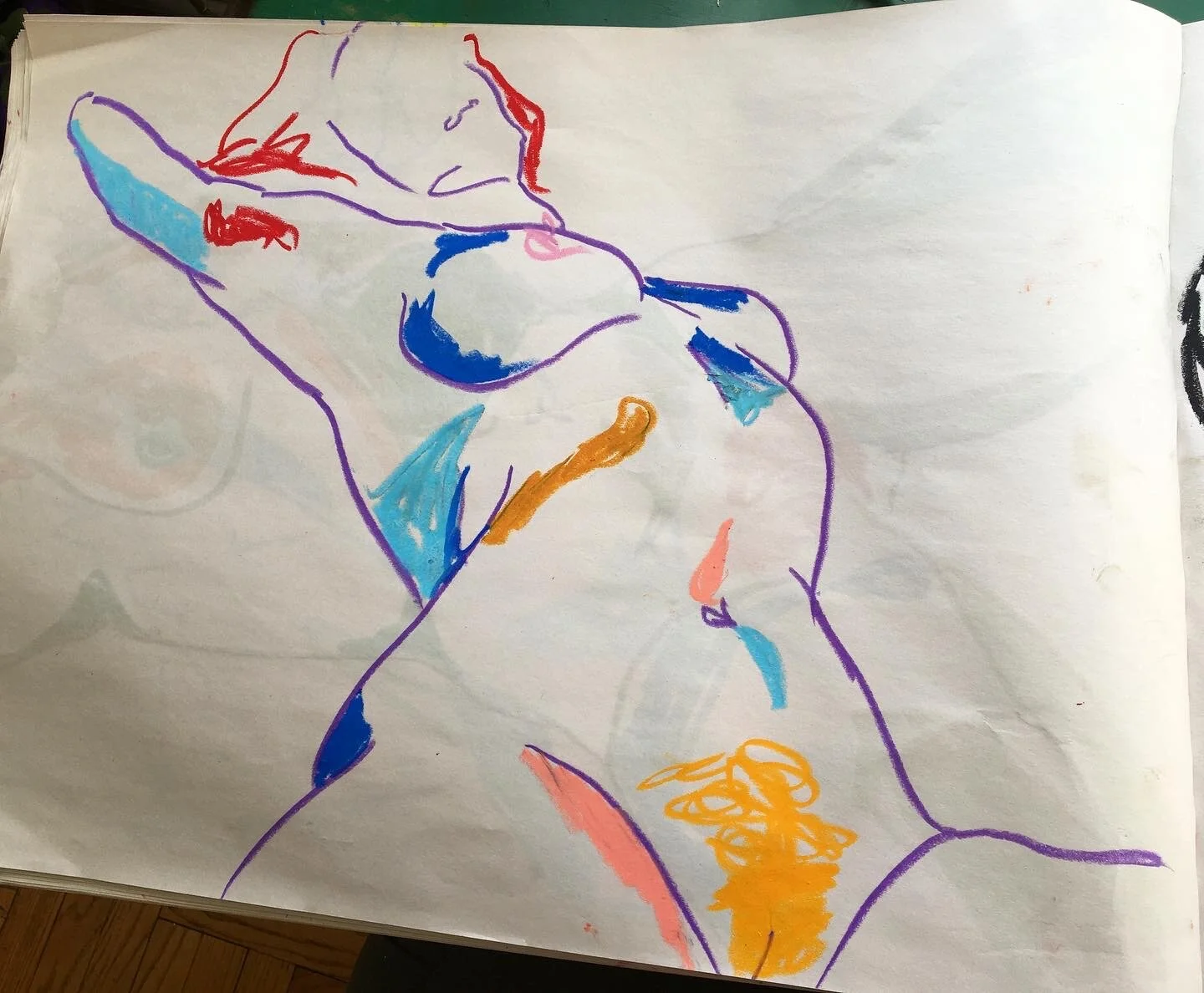The States Must Lead: A NEW “New Deal” for the Arts in 2020
Artist Unknown (Possibly Jerome Henry Rothstein), Eagle and palette design regarded as the logo for the Federal Art Project, ca. 1938
The world is different now. This virus has delivered to us the worst plague in one-hundred years, infecting every part of our “normal” lives — and the casualties keep piling up. It takes our loved ones, our jobs, and our routines. It methodically destroys our industries, our well-being and our culture, leaving the smallest and most susceptible to compete over limited resources. It exposes the worst of who we are: lack of federal leadership and general cooperation, a stressed healthcare system, and how we feed and protect our most vulnerable. It forces new labels upon our society like “essential worker/business” and “non-essential worker/business” and we now must reassess our career and work contributions in this country. And, it’s shown how greed drives what “we” value and what “we” are willing to sacrifice to return to “our normal.”
We need a plan. A bold strategy with a vision that includes ALL Americans working to preserve the best of our way of life — that includes our culture. With over 38 million Americans filing for unemployment (and counting!); small and medium businesses unable to financially recover from three months of closure; and no clear end to when stay-at-home orders will cease: What’s the plan on how we recover from this destructive black swan?
Anne Siems, Black Swan Arms, 2019. Image Credit: Anne Siems Website
What should we do? What can we do?
The short answer is: We survive. The better answer is: We survive, then we stabilize.
Covid-19 is a complex issue, and it requires a sophisticated solution unfolding in two parts: Survival and Stabilization. We are currently in Survival mode, which covers items that need immediate attention such as:
Health Related Issues: Flattening the curve; a vaccine; mass testing; hospital support; PPE; free healthcare related to Covid-19.
Emergency Funding: The CARES Act stimulus package did this with small business loans and stimulus checks to Americans; bolstered unemployment payments; delayed evictions; delayed bill payments; etc.
Community Connectedness: Think video chat calls; daily briefings by Cuomo; social media posts with calls-to-action making masks; donating food to healthcare workers; etc.
A strong combination of these immediate action items will dictate which industries will survive, or succumb to, extinction. If any single item is anemic, exclusionary, or not enforced by leadership, a freefall will ensue. This, regretfully, is largely what is happening in the art world. Will they allow small galleries to apply for aid or business loans if they only employ freelance workers? How can an industry that depends on large, dense gatherings —like art fairs, galas and gallery openings— create buzz for their artists, venues and exhibitions with a mandate in place for social distancing and zero crowd tolerance? How can an emerging artist sell their work, if it’s not possible to hang shows for the foreseeable future? Where will all the unemployed and “non-essential” museum employees— such as educators, freelancers and visitor service staff— work when venues reopen but no longer have funding to employ them? And the list goes on….
This is why a “survival” only strategy will not get us past this unprecedented disaster. If that’s all the federal, state and local governments plan on doing, we will never return to a version of “normal.” In fact, the debt accrued; the mass extinction of art venues; the evaporation of available jobs; and stagnation of career paths, will be so profound that it could take a generation for American Art to recover — if it fully recovers at all. Therefore, we need a plan to “stabilize” our industry and individuals in order to have any chance of thriving, once again, in the future.
To start, we can examine how the U.S. accomplished such a daring and controversial endeavor once before.
Jerome Henry Rothstein, Front Cover of Federal Art Project 1939 Calendar, 1938, Works Progress Administration, Library of Congress Prints and Photographs Division.
In 1934, President Franklin D. Roosevelt chose to support the arts during the worst financial crisis the country had ever seen. This “New Deal for the forgotten man” created multiple agencies and sub-agencies that employed artists including: the Public Works of Art Project (PWAP), the Federal Art Project (FAP), the Indian Arts and Crafts Board, and the better-known Works Progress Administration (WPA). Not only did these programs create work for a range of skill sets: painters, photographers, sculptors, muralists, cartoonists and printmakers; but it notably employed those that were typically “forgotten” artists: women, people with disabilities, African Americans and Native Americans. About one-fifth of the FAP workers were women, and they were paid the same amount as the men: $23.86 per week (approximately $433 today). Roosevelt’s swift and unprecedented decision was also the first time the federal government had ever stepped in to aid a profession that most Americans didn’t even consider a “job.” Harry Hopkins, an advisor to the president and architect of the New Deal programs, famously convinced the president arguing, “Hell, they’ve got to eat just like other people!”
In addition to providing jobs for these artists, writers and laborers amongst the arts, Roosevelt contrived a larger mission — to show all American people what a “real” work of art looks like. He wanted to share with them that visceral experience that can only come from the original object.
“I, too, have a dream-to show people in the out of the way places, some of whom are not only in small villages but in corners of New York City-something they cannot get from between the covers of books-some real paintings and prints and etchings and some real music.”
Ben Shahn, The First Amendment, 1941, Mural for Woodhaven Station Post Office, Jamaica, NY for New Deal’s Treasury Section of Fine Arts.
Soon local public buildings, like post offices, had murals making art visibly accessible to the people. Photographers documented daily rural and city life, sharing candid and emotional realities across the nation. Colorful posters and prints promoted the country’s progress and patriotism in store windows. Roosevelt understood the nation needed art as much as these artists needed their jobs. The New Deal’s art programs transformed the horrors of a crisis into real opportunities that promoted distinctly American art and culture and made those employed by the arts programs “essential workers” on “essential projects”. Perhaps Willem de Kooning, who worked on FAP murals from 1935-37, said it best,
“The Project was terribly important... I changed my attitude toward being an artist. Instead of doing odd jobs and painting on the side, I painted and did odd jobs on the side. My life was the same, but I had a different view of it.”
Willem de Kooning, Study for the Williamsburg Project, c. 1936, (NOTE: The Williamsburg Federal Housing Project in Brooklyn mural was never realized)
Once again, Americans today face “Depression” level indicators as experts are predicting the extinction of the art world as we know it. Unfortunately, drafting a program from FDR’s playbook verbatim will simply not work. One difference is the pandemic factor. At the moment, and likely for the foreseeable future, social distancing and quarantine will be a delicate dance choreographed by state governments. Too many infections? We will be right back to two-week shutdowns and self-quarantine orders. Success with flattening the infection curve? Then only essential businesses and others that can ensure social distancing will reopen.
Simply put, we will not be able to have large crowds — think gallery openings, large fundraisers for non-profits and art fairs, a.k.a. our life blood. We also cannot have people working closely together like the workshop set-ups during the New Deal. As citizens, we will embrace mask wearing and frequent hand washing as the new normal until a vaccine is made and we have established herd immunity. How then could we implement large, job-creating projects in the arts?
Another glaring difference between 2020 and 1934, is the Federal Government’s role as “leader.” While congress was able to pass a stimulus bill, current executive branch leadership has made it clear that we are not “states united” during this pandemic, and have waived their duty to activate a decisive federal response. Instead, every state must make their own decisions with limited support from the federal government. Now that we know where we stand, let’s work with what we have.
Ai Weiwei, Untitled (Middle Finger Mask), 2020. Image Credit: Ai Weiwei Instagram
The State of New York could take the reins and start a New Deal Program— New York Edition. Through his steady and fact-based daily briefings, Governor Andrew Cuomo asserts his determination to keep New York afloat. While he focuses on bailing out the ship from the first iceberg hit (Covid-19), we’re already taking on water from the second: financial fallout. The arts contribute more than $114 billion to NY’s economy each year. Could the state or city prosper without revenue and jobs generated from the arts? (Could your state prosper without it?) As state budgets like New York’s shrink by 20% and counting from lost revenue, the easy solution is to cut your allocations to “non-essential” programs, like the arts, first. The wiser and more salient solution would be to rethink how to best utilize our current art infrastructure, an already powerful resource, to help stabilize our sinking economy.
After all, many companies will soon decide whether or not to decrease their physical footprint and allow their employees to work from home indefinitely— where does that leave New York? If most of our top industries such as Finance and Technology follow suit, perhaps the arts will soon become the main reason to work in New York. Such an uncertain climate necessitates support to as many industries as possible.
This brings us to phase two; “Stabilization Mode,” which should be implemented before the first wave has passed. Covid-19 has done a fantastic job exposing everything that is fragile within our society. This systemic fragility is also true for the art world. The headlines are alarming: “Metropolitan Museum of Art Now Says It May Lose up to $150 Million”, “Two-Thirds of Artists Are Unemployed…95% Have Lost Income”, “Galleries Around The World Expected to Lose 72% of Annual Revenue.” The terms “furloughed” and “laid-off” are now part of our daily lexicon. Everyday we seemingly inch closer to the tipping point where many of our jobs and businesses will be permanently erased.
How can we plug this drain-circling experience long enough to pull ourselves out? What tools and support do we need for our community?
Stabilization Mode
Freedom Dividend: Money helps. A dependable monthly dividend check could provide a much needed sense of financial stability as job opportunities and freelance gigs evaporate and unemployment checks dry up. As the worst hit state in the union, New York citizens need Universal Basic Income (UBI). The unfortunate reality is most will not recover wages lost from the past two months, and now we are looking at wage disruptions for fourteen months or more. Additionally, Governor Cuomo has made clear he will slowly reopen non-essential businesses and prioritize those where both workers and customers are able to maintain social distancing. What should we do for those who are furloughed, underemployed or unemployed? Former Democratic Presidential Candidate Andrew Yang has written and spoken about UBI extensively. Most recently he’s advocated for New York City to begin a program, suggesting that $1000 monthly for every citizen would “inject nearly $13 billion per month into the state of New York.” With just over seven million citizens in NYC as of 2017, that would be a very attractive return on a $7 billion investment. How do we pay for that you ask? Yang has a plan.
Universal Healthcare: It’s a pandemic, EVERYONE needs healthcare because ANYONE can be exposed— this includes artists and art industry workers. There’s no feasible way the current system will function going forward — it’s way too expensive. As most insured people obtain healthcare from their employer, and we currently have a large percentage of people out of work, how is this model sustainable? And what about all the freelancers in the art world? Healthcare insurers are already predicting costs to be 40% greater next year, and they haven’t factored in all of the possible health complications that may result from exposure to the disease. Again, New York is the hardest hit state. It seems like now would be a good time to look into expanding statewide coverage. Wouldn’t it be cheaper, in the long run, if we do?
Job Creation or “New York Creates”: As we start to re-open New York for increments of time, we need a plan to create stable jobs for those who have “non-essential” employment status. Artists want to work. They want to create and contribute. This is a chance to re-envision our art world. Let’s embrace the concept of the New Deal, and switch-up the execution. Let’s choose a variety of arts projects that plan for social distancing, frequent shut-downs, and can employ a variety of workers. Let’s focus more on local and regional, rather than national efforts.
Here are two examples of how New York Creates could include the arts in that plan:
A Great Citywide Art Walk: If crowded indoor spaces are the enemy, then let’s embrace an outdoor, spread-out model. The twist will be not going into gallery spaces, but utilizing what’s visible from the street. Think of it more as a hybrid of curated window displays paired with exterior installations. The art will be on view close to or in gallery windows and therefore visible all day. For galleries and art-spaces without ground-floor access or adequate windows, we could utilize storefront and retail spaces that are willing to participate or empty and currently between leases, as well as vacant lots that can hold sculptures or installation art. It would undoubtedly create a moment of curatorial creativity on steroids.
Gallery walks are not a foreign concept to New Yorkers, as we have several each year, organized by sponsors such as ARTnews (Madison Avenue Walk) and NADA (Armory Show Walk). The goal here would be to expand beyond a neighborhood concept to encompass an entire city (like New York) — the end of cultural dead zones! It would be achievable through a network of cooperation that includes: local governments, corporate sponsors, commercial galleries, non-profit art spaces, independent curators, and artists.
In order to keep everyone from installers to visitors safe, we simply embrace the restrictions as a part of the creative challenge. Installation must be simple and perhaps only utilize a solo installer. For viewers, put six-foot spaced dots on the sidewalks, allowing and encouraging people to view safely. Installations could have multiple viewing points at varying distances as well — close for intimate details of paintings, or far for large video projections.
Kenny Scharf, Optimistically Melting!, 2019 Exterior Installation view, Honor Fraser Gallery, Los Angeles, CA
The walk will also be educational and incorporate interactive elements beyond an in-person experience. A formal website would be created to allow anyone to inquire about purchasing works of art and to virtually access sites around the city— imagine the advertising possibilities! There could be a podcast series dedicated to interviewing artists and curators. We could hire educators to write lesson plans for K-12 students. Themed audio tours could be incorporated. A major catalogue could even be created that includes images of selected works and essays by local art scholars and critics, with a portion of the proceeds dedicated to charity. The objective is to get everyone in the art industry involved and paid, who might not have work, or enough work, at the moment.
To provide the capital needed to get the project off the ground, perhaps exhibition participants could pay a small fee to have their art space listed on the walk. Non-represented artists could partner with a non-profit or join an independent curator-led group to secure a low-cost or donated space. Due to the project’s scale — an entire city — advertising packages could be sold. Perhaps investors would be interested in sponsoring commissioned works? Since all works will be for sale, a portion of all sales could be used as a group fund to ensure all artists and venues receive some payment (see NADA’s latest online exhibition model).
State & Local Government Bonds for Public Art Projects: While it’s a common practice for federal and state governments to issue bonds to cover the costs of wars and infrastructure projects, why not for public art programs too? A bond is a unit of municipal debt that pays an investor a fixed rate of return for an agreed term limit, until the amount is due in full. Bonds issued by state and local governments are considered the second safest investment after U.S. federal bonds, making them attractive to a variety of investors. New York City already has an Arts related bond program, The Trust for Cultural Resources for the City of New York. Moving forward, the state and cities could expand upon this framework to create a large-scale umbrella program funded by bonds. Ideally, the bond pricing would be set at an affordable level, allowing (and encouraging!) the average New Yorker to buy them and show support. The capital raised would be used to fund or bolster a variety of art-related projects that have the potential for generating income through the eventual sale of the art object, ticket sales, or tax revenue (generated by beautifying and visually improving a neighborhood’s infrastructure) to name a few.
Program coordinators could create a series of competitions for commissions of art objects, projects and spaces throughout the state. It’s an opportunity to rethink what we, as a community, value in the era of Covid-19 — both the beautiful and the practical. Some examples may include:
Green-spaces: Parks and gardens will be high on the “essentials” list for citizens after months of lockdown and more in sight. Every neighborhood should have access to a local free space. These new sites could include niches or boundaries that encourage social distancing, and incorporate sculpture gardens with both rotational and permanent artworks.
Paul Kopkau, Yard Shadow: Samsung, 2019 at Socrates Sculpture Park, Astoria, Queens, NY
Hand Washing and Sanitation Stations: These will be a necessary part of our life going forward and will likely be as common as telephone booths once were. By reconsidering them as art objects, artists could embrace them as a creative challenge, reimagining them as bold statements and/or aesthetically pleasing forms.
Subway Stations & Platforms: High on the list would certainly be New York's subway system. Moving forward, we not only have to find ways to sanitize these public spaces, but also to inspire peaceful co-existence within them. Viewing artwork has been proven to help patients in hospitals dealing with terminal illness, so there's little doubt it would help alleviate the anxiety riders feel on platforms and in tunnels. Our subway could be a point of civic pride rather than a lightning rod for political discord. Imagine that?
Hospitals: Our healthcare workers are also very deserving of permanent recognition for their part in saving our state and city. When safety can be ensured for workers and creators, hospitals should be filled and surrounded by artworks. In addition, art programs centered around healing and recovery should be provided for hospital staff and patients.
Bansky, Our New Heroes, 2020, Mural at Southampton General Hospital, United Kingdom.
Murals: Perhaps we could implement a mural program similar to Los Angeles: where businesses can request murals on their interior or exterior walls and become a part of the “New” New Deal’s historic movement.
Pony Wave, Stay Safe, 2020, Temporary Mural on Venice Beach Boardwalk, Los Angeles, CA. Artist in foreground. Image Credit: Pony Wave Instagram
Rooftop Concerts & Performances: Musicians and Performance Arts could present their work live for neighbors to see and for those at a distance to stream.
Oral History & Documentary Projects: Photographers, photojournalists, documentarians, librarians, researchers, curators, and academics, all have a shared interest to document current events in a way for us to make sense of how this affected our broader culture and art-making. They will be an invaluable resource for future generations. It will be particularly interesting to see if we stay the course on inclusion and diversity, or fall back into old habits.
Educational Programs: Whether they be studio art or art history centered, we need to ensure this programming continues to exist. Ideally each program would have the ability to both pay instructors and also allow those unable to pay admission still attend. Perhaps something like a G.I. Bill could be created for all students, no matter their age, to cover education costs — including art schools, art training and related art programs like private/group lessons, retreats, and camps.
Kimmy Quillin, Untitled (Sketch of @bodyconfidence), 2020. This sketch was made during a nude figure drawing session on Zoom organized by a collective group of New York artists. Image Credit: Kimmy Quillin
Similar to FDR’s New Deal, these projects would hit on many key objectives: to generate as many freelance positions in as many disciplines as possible and to create a safe, art viewing and immersive experience for New Yorkers, both in person and from home. It would bring art to “cultural dead-zones” within our cities, and provide neighborhoods with many vacant buildings or hurting businesses with extra foot traffic, and perhaps green-spaces. During this psychologically traumatic time, it would be a welcome comfort to be surrounded by works of art created by living artists. The works will always be visible, and in some instances utilitarian, and serve the public when they need it the most. People need to feel connected even when we physically are unable to be; art could be that conduit that comforts our state during this long healing process.
Frances Perkins stands behind President Franklin Roosevelt as he signs the Social Security Act into law on August 14, 1935.
“One thing is sure. We have to do something. We have to do the best we know how at the moment…; If it doesn’t turn out right, we can modify it as we go along.”
Let’s design a plan. Let’s create a bold strategy. Let’s save the best of the art world and show how essential art is to our culture, once again. Let’s make FDR proud, he was a New Yorker after all. ❤️


